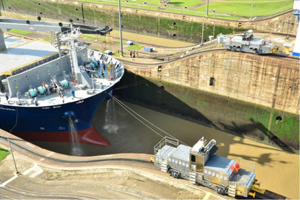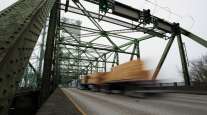Trucking Ready for Panama Canal Expansion But Cites Infrastructure Concerns

The trucking industry is prepared for projected increases in freight set to come from an expanded Panama Canal, but an industry executive warned a Senate panel of challenges related to congestion and the condition of U.S. infrastructure.
Testifying on behalf of American Trucking Associations, Phil Byrd, CEO of Bulldog Hiway Express, North Charleston, S.C., said substandard highway infrastructure will make it difficult for trucking to handle the additional freight demand at East and Gulf coast ports once the canal’s expansion is complete.
“The biggest challenge to accommodating increased freight volumes lies outside the port gates — specifically, the ability of our congested highways to handle the increased freight,” Byrd said Wednesday at a hearing of the Senate Commerce, Science and Transportation Committee.
Bulldog Hiway Express is the largest carrier serving the Port of Charleston, S.C. Byrd said that port, like others nearby, is preparing for larger ships and increased traffic through projects such as dredging the harbor to 50 feet.
“Clearly, while port infrastructure may potentially be ready to handle increased container volumes, outside the port gates, our intermodal connectors and highway system are not,” he told the panel.
The canal’s current maximum ship size is about 5,000 20-foot equivalent unit (TEU) containers. New maximum ship size will be about 12,000, according to the Panama Canal Authority, which projects the $5 billion expansion to add a third lane to be complete by mid-2015. The canal opened in 1917.
Panama is wrapping up a nine-year project at a cost of more than $5 billion to add a third lane to the canal, the first major expansion since it opened in 1917. The new lane will be able to handle ships about 2.5 times the maximum capacity of the existing lanes.




